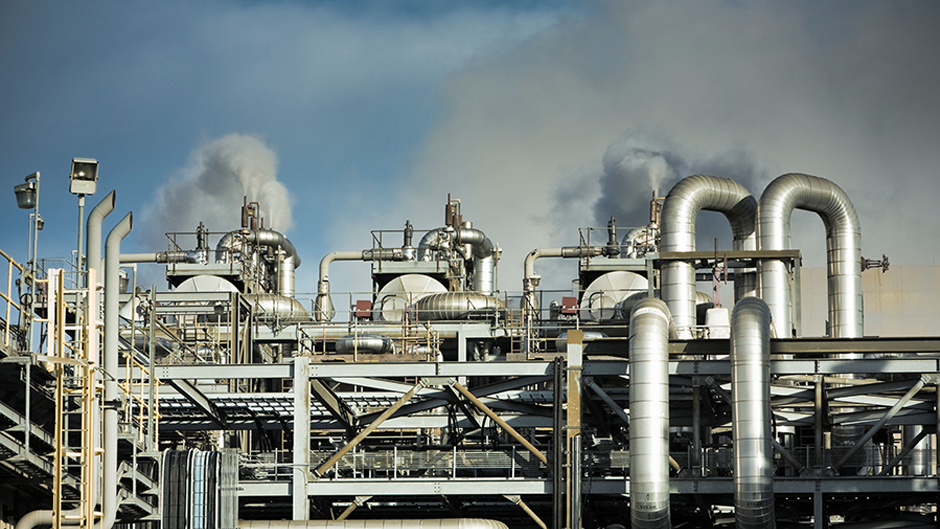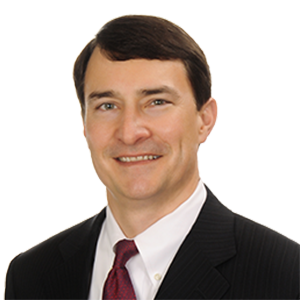On May 12, 2016, the U.S. Environmental Protection Agency (“EPA”) issued New Source Performance Standard (“NSPS”) Subpart OOOOa, the agency’s climate change regulations for methane and volatile organic compound (“VOC”) emissions for the oil and natural gas sector.1 Although the new rule only applies to facilities constructed, reconstructed, or modified after September 18, 2015, it may be a first step towards climate change regulations for existing oil and gas sources. The new rule builds on existing Subpart OOOO, as follows:
- Regulates methane: The new rule officially regulates methane emissions, adding methane to the Subpart OOOO VOC standards, such as the Reduced Emission Completion (“REC”) standards for hydraulically fractured well completions and the Leak Detection and Repair (“LDAR”) requirements for natural gas processing plants.
- Optical gas imaging (“OGI”) for well sites and compressor stations: Semiannual OGI monitoring for fugitive methane and VOC emissions is required for oil and gas well sites, such as tank batteries. Quarterly OGI monitoring is required for compressor stations. Method 21 monitoring, with a 500 ppm TOC repair threshold, may be used as an alternative.
- Additional sources: The new rule extends a number of Subpart OOOO requirements to additional oil and gas sources. Significantly, Subpart OOOOa requires RECs for hydraulic fracturing of all wells, instead of just gas wells. The rule also adds new standards for pneumatic pumps.
- Sector-wide expansion: The proposal extends Subpart OOOO standards for pneumatic controllers and centrifugal and reciprocating compressors (with the exception of well-head compressors) to the entire oil and gas sector.
In general, all Subpart OOOO requirements have been incorporated into Subpart OOOOa, with the applicability of many requirements broadened significantly. The most significant elements of the rule are the extension of REC requirements to fractured and refractured oil wells, OGI fugitive emissions monitoring for well sites and compressor stations, and the application of compressor leak standards to the natural gas transmission segment.
NSPS Subpart OOOOa was promulgated under Section 111(b) of the Clean Air Act (“CAA”), which means it applies only to new, reconstructed, or modified affected facilities. However, the EPA may eventually propose climate change standards for existing sources under Section 111(d). Because this latter statutory provision is the basis for the agency’s Clean Power Plan regulations for existing power plants, the outcome of the legal challenges to that rule may strongly influence the likelihood and scope of future climate change regulations for existing oil and gas facilities.
Background
When the Subpart OOOO oil and gas standards were finalized in 2012, the EPA declined to impose explicit requirements for methane reductions, instead allowing methane to be controlled as a “collateral benefit” of VOC reductions. However, the agency subsequently received petitions for reconsideration in which environmental advocacy groups urged the Administrator to adopt standards for the “methane pollution” released by the oil and gas sector.
The Subpart OOOOa rule is the agency’s response to the petitions for reconsideration. In the years since the petitions, the EPA collected data on oil and gas sector methane emissions through the Mandatory Greenhouse Gas Reporting Rule and prepared several white papers, issued in 2014, summarizing sector emissions and potential mitigation technologies.
The final rule was also influenced by President Obama’s 2013 Climate Action Plan and Methane Strategy and the administration’s announcement in January 2015 of a new goal to cut methane emissions from the oil and gas sector by 40 to 45 percent from 2012 levels by 2025. While not mentioned in the preamble, it appears clear that the new rule is also an element of the President’s plan to employ administrative rules to achieve administration commitments under the December 2015 Paris Agreement (pursuant to the United Nations Framework Convention on Climate Change).
New and Expanded Requirements
In the preamble, the EPA states that the Best System of Emissions Reduction (“BSER”)—the control standard for new, modified, and reconstructed NSPS sources—is generally the same for methane as it is for VOCs. Accordingly, as a first step, Subpart OOOOa keeps the VOC emissions controls specified under Subpart OOOO and also applies these same measures to the control of methane.
However, the rule also adds new requirements, extends the applicability of Subpart OOOO requirements to additional types of sources, and expands coverage to additional segments of what the EPA calls the oil and natural gas source category (meaning the production, processing, transmission, and storage “segments”). These new and expanded requirements, summarized below, will apply to affected facilities constructed, modified, or reconstructed after September 18, 2015.
- Centrifugal compressors: Expands the requirements for wet-seal centrifugal compressors in the production segment to the entire oil and gas sector, except that well-head compressors are exempt. The requirement is to capture and reduce emissions by 95%.
- Reciprocating compressors: Expands the requirements for reciprocating compressors in the production segment to the entire oil and gas sector, except that well-head compressors are exempt. The requirement is to capture and reduce emissions by 95% or to change the rod packing every 26,000 hours or 36 months.
- Pneumatic controllers: Expands the general requirement to use low-bleed controllers (not to exceed 6 scfh) to the entire oil and gas sector, except that no-bleed controllers would still be the general requirement for natural gas processing plants.
- Pneumatic pumps: This is a new requirement. Owners and operators must capture and route pneumatic pump emissions to a control device or a process to achieve a 95% reduction if a control device or suitable process is available at the site.2 Where an existing control device is used, reductions of less than 95% are acceptable. Pneumatic pumps at natural gas processing plants must meet a zero emissions standard.
- Well completions: Extends the REC and combustion control requirements for hydraulically fractured natural gas wells to hydraulically fractured oil wells. The same partial exemptions that currently apply to natural gas wells (e.g., for wildcat, delineation, and low-pressure wells) would apply to oil wells. In addition, there is an exemption for low gas-oil-ratio wells.
- Fugitive emissions: Adds fugitive emission requirements to production well sites and compressor stations by requiring periodic OGI surveys and the repair of identified fugitive emissions sources. Inspections would be required on a semiannual basis for well sites and a quarterly basis for compressor stations.
- Leaks would be visually confirmed with an optical gas imaging device. Method 21 may be used as an alternative, but the repair threshold is stringent (500 ppm).
- Well sites with only one or more wellheads are excluded. The EPA proposed an exemption for low-throughput sites (less than 15 bopd), but did not finalize this exemption.
- Repairs must be completed within 30 days, with re-monitoring completed within an additional 30 days. Repairs may be delayed for up to two years if it is technically infeasible to complete the repair within 30 days.
- A monitoring plan must be developed and implemented. The monitoring plan must cover all affected facilities within an area defined by the owner or operator.
- Well sites would be “modified” only if a new well is added to an existing well site or an existing well at such a site is fractured or refractured.
- Compressor stations would be “modified” only if an additional compressor is added or one or more compressors are replaced and the result is a net increase in the total compression horsepower at the facility.
- Of note, natural gas processing plants remain subject to Method 21 LDAR requirements. However, methane is now a controlled pollutant for gas plants.
- Liquids unloading: The EPA solicited comments on liquids unloading. But, due to a lack of sufficient information, the EPA did not finalize standards for liquids unloading.
- “Next Generation Compliance”: The EPA considered “next generation compliance” options as part of Subpart OOOOa. The agency did not finalize some of the more stringent options it was considering, such as compliance verification by independent third-parties and third-party submission of compliance information. Nonetheless, the final Subpart OOOOa rule does require professional engineer certifications for vent system designs and PE certifications to verify that it is technically infeasible to achieve 95% control for a pneumatic pump.
Other Amendments
The EPA also finalized “implementation improvements” to Subpart OOOO, but did not amend the rule’s substantive control standards. The most significant of these amendments are:
- Control device monitoring and testing: Unless a manufacturer’s performance test was conducted, the operator must conduct an initial test and follow-up tests every 60 months. Given the large number of dispersed sites for which testing will be required, the provision will represent a significant cost. The performance criterion was raised from 20 ppmv to 275 ppmv. Monthly monitoring of visual emissions is required (15 minutes using Method 22).
- Flare design: The EPA finalized its proposal to clarify that flares must meet the design and operational requirements in 40 C.F.R. § 60.18.
- Large water recycling tanks: The EPA finalized its proposal to remove applicability for large water recycling tanks. Despite very low VOC concentrations, these tanks sometimes exceed 6 tpy of VOC emissions due to millions of gallons of annual throughput. The new exemption applies to tanks with a capacity of more than 100,000 gallons that store water after two-phase separation.
Conclusion
Many of the provisions in the Subpart OOOOa rule could have been promulgated by the EPA as VOC control provisions, without any consideration of methane emissions. However, it has been touted as a climate change rule and, therefore, constitutes another step in the EPA’s campaign to regulate GHGs under the existing Clean Air Act without additional authorization by Congress. As such, it is expected that there will be numerous legal challenges to the rule.
Beyond climate change symbolism, the rule’s substantive provisions will impose a significant compliance burden on industry. Subpart OOOOa is the first federal standard to extend leak detection and repair requirements to production well sites and compressor stations—compliance with the periodic OGI surveys required by the rule will require significant resources by industry, especially so given that the EPA did not finalize the proposed exemption for well sites with less than 15 bopd production.
The expansion of requirements to apply sector-wide and the extension of control requirements to additional sources will also impose compliance costs. In particular, REC requirements for hydraulically fractured oil wells will be significant, given that many oil production facilities are not connected to sales pipelines, instead flaring separated gas and relying on trucks to convey crude oil and condensate liquids to market.
The requirement for professional engineer certifications for vent systems is also significant. Based on certain Consent Decrees with oil and gas operators and recent negotiations in the Bakken, the EPA has been seeking to impose a “no venting” standard for vapor collection systems at oil and gas facilities. The new rule's requirement for professional engineer certifications for these systems is clearly intended to move operators towards this level of design and control. Specifically, the professional engineer will need to verify and certify that the closed vent system is designed to handle all reasonably expected emissions scenarios, including flash emissions based on “peak flow,” such that thief hatches and other devices will not relieve during normal operations.
2 The EPA found that it was not cost effective to require the installation of a control device solely for the reduction of emissions from pneumatic pumps.





